Discover 11 hidden attractions, cool sights, and unusual things to do in Burton upon Trent (United Kingdom). Don't miss out on these must-see attractions: Branston Water Park, St Peter's Bridge, and National Brewery Centre. Also, be sure to include Winshill Water Tower in your itinerary.
Below, you can find the list of the most amazing places you should visit in Burton upon Trent (England).
Table of Contents
Branston Water Park
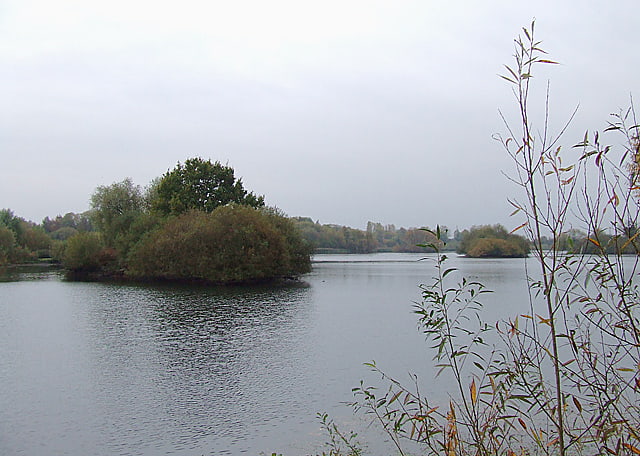
National forest in England. Branston Water Park is a local nature reserve near Burton upon Trent, in Staffordshire, England, adjacent to the village of Branston.[1]
Address: Lichfield Road, DE14 3HD Burton upon Trent
St Peter's Bridge

St Peter's Bridge carries the A5189 road across the River Trent in Burton upon Trent, Staffordshire, England. Opened in 1985, the 800-metre long reinforced concrete bridge is the most recent road crossing of the Trent. It was closed for more than two months in 2017 for major repair works.[2]
National Brewery Centre
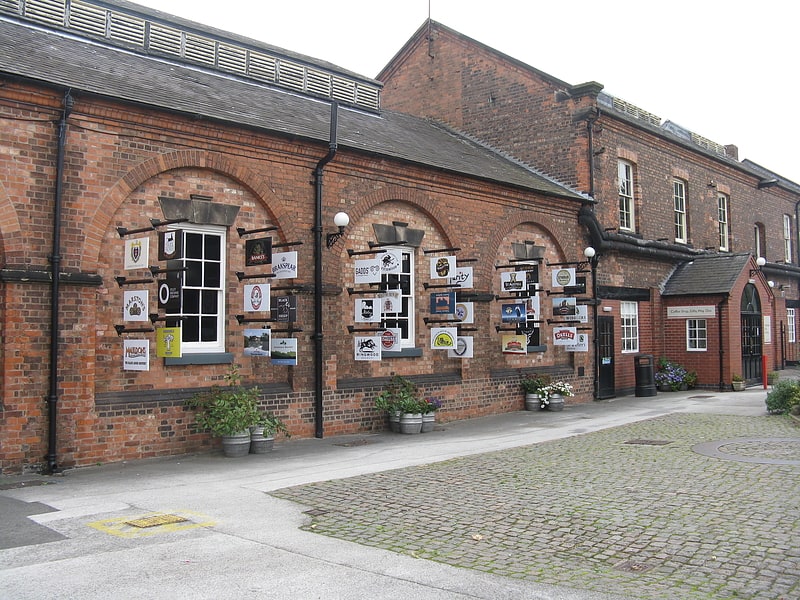
Museum in Burton, England. The National Brewery Centre is a museum and tourist attraction adjacent to the Bass Brewery in Burton upon Trent, Staffordshire, England. The centre celebrates the brewing heritage of Burton and features exhibits showcasing the history of brewing techniques. The centre also houses a bar and cafe, a history of the town, a collection of historic vehicles, a micro brewery and a shire horse collection.[3]
Address: Horninglow St, DE14 1NG Burton-on-Trent
Winshill Water Tower
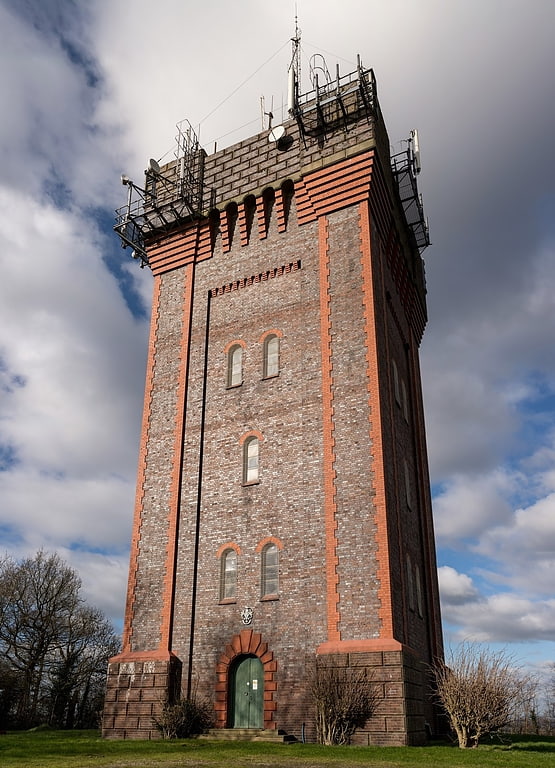
Winshill Water Tower is a former water tower in Burton upon Trent, England. It was constructed in 1907 after a local resident won a High Court ruling against the South Staffordshire Waterworks Company for poor water-supply pressure. The brick tower held a cast-iron water tank at a height of 80 feet to provide sufficient hydraulic head to improve water pressure. Constructed on Burton's highest point known as Waterloo Clump, the tower is visible from across the town and is a well known local landmark. The tower ceased to have any role in water supply in the 1990s but has since been used as a radio tower.[4]
Ferry Bridge
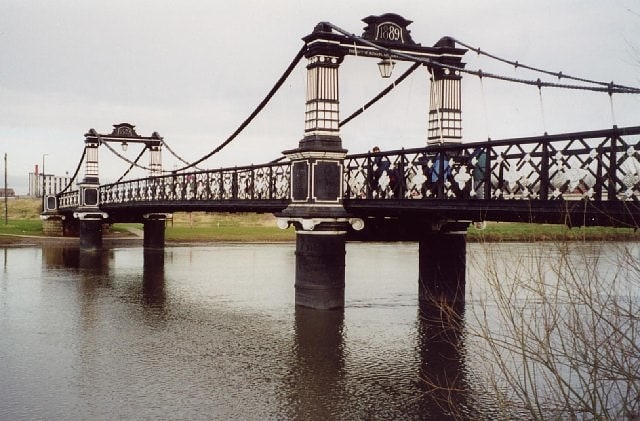
Pedestrian bridge in Burton, England. Ferry Bridge is a Victorian pedestrian bridge over the River Trent in Staffordshire, England. The bridge and its extension, the Stapenhill Viaduct, link Burton upon Trent town centre to the suburb of Stapenhill half a mile away on the other side of the river.
The bridge is a "semi-suspension" bridge, of which this is the first and only one of its kind in Europe to be built to this design. It was designed and constructed by a local firm, Thornewill and Warham. It is a three-span footbridge totalling 240 ft (73 m) in length. The chains were made of flat bar iron, and are continuous from one end of the bridge to the other. They are riveted to the ends of the main girders, not anchored at a distance as they would normally be on a traditional suspension design. The bridge is made of wrought iron and cast iron, and is Grade II listed.
The bridge was built to replace a small ferry service that had operated at the same site since the 13th century. The Ferry Bridge was gifted to the town by brewing magnate Michael Arthur Bass, later Lord Burton. It was officially opened on Wednesday 3 April 1889, and the ceremony was attended by between 8,000 and 10,000 people.
The bridge has remained in use by hundreds of people every day, apart from during two renovations, most recently in 2015–2016. The bridge carries National Cycle Route 63 between Stapenhill and Burton town centre.[5]
Stapenhill
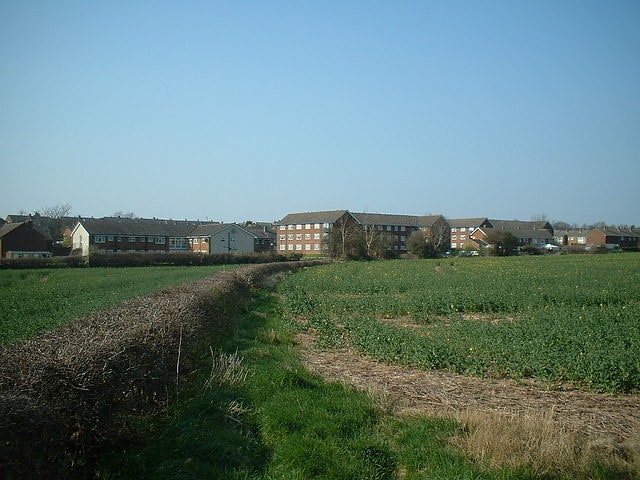
Village in England. Stapenhill is a suburban village and civil parish in Burton upon Trent, Staffordshire in the UK. It was a small village owned by Nigel of Stafford as far back as 1086, however, this ancient parish area has long since been surrounded by new housing developments and gradually absorbed into the Burton urban area. Stapenhill was known for its brickyards in the 18th and 19th centuries.
Several major music festivals take place every summer at Catton Hall, on the outskirts of the village.
Stapenhill Gardens is the epitome of Stapenhill. Its main feature is a giant artificial swan with all flowers planted in it. This represents the swans who have historically inhabited the Gardens, and also the wider immutability of life in general. Similarly, the local football team is Stapenhill Swans. Stapenhill Gardens is also the location of the annual "Tulip Festival", an event unrivalled outside The Netherlands, although this has not run for several years.
Current and former pubs and bars in the area include The Copper Hearth (now a Tesco supermarket), The New Inn, The Punch Bowl (now a care home), The Barley Mow (new home of the BIS), The Crown, The Grove, The Dart (now closed), The Freehold Tavern (now a Chinese restaurant), The Plough (now demolished for housing), and The Elms. Stapenhill is well known for its wide variety of shopping opportunities, ranging from major chain-stores to independent craft butchers. The primary retail centres are Main Street; Rosliston Road/Brackenwood Road area; and Short Street/Lincoln Road.
Other local features include St Peter's Church of England church and a large cemetery. The main Secondary Schools in the area are Paulet High School and Blessed Robert Sutton Catholic Voluntary Academy. Primary schools include Violet Lane Infants and Edge Hill Junior to the east, and to the south Waterside Junior and Short Street Infants merged in 2011 to become Riverview Primary.
The village is east of the Trent, and thus was administered as part of Derbyshire from at least 1086 until the Local Government Act 1888, when it passed into Staffordshire as a result of boundary changes. The boundaries of the original ancient village were Rosliston Road, Cumberland Road, Short Street and Norfolk Road.[6]
Fradley Junction
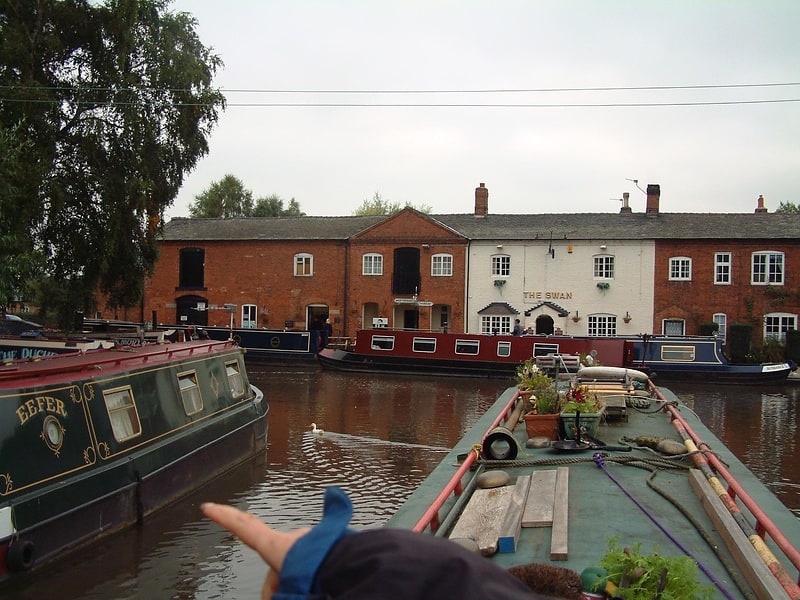
Fradley Junction is a canal junction between Fradley and Alrewas near Lichfield, Staffordshire, England and the point at which the Coventry Canal joins the Trent and Mersey Canal. It opened in 1790, and several of the buildings around it, including The Swan public house, are grade II listed structures.[7]
Address: Fradley Junction, DE13 7DN Burton upon Trent
St Modwen's

St Modwen's is a Church of England parish church situated in Burton upon Trent in Staffordshire, England. It is part of the Diocese of Lichfield. The church is dedicated to St Modwen, or Modwenna, a nun who founded an abbey at Burton in the 7th century.
It replaced the remains of the church of Burton Abbey which was used by the town after the dissolution of the abbey.[8]
Stapenhill Gardens
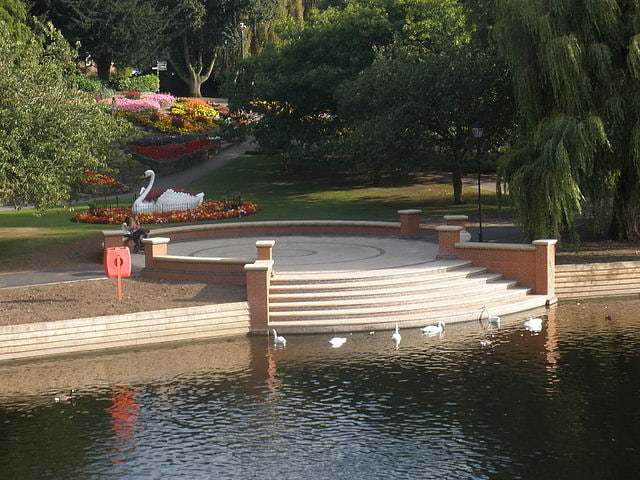
Park in Burton, England. Stapenhill Gardens is a park in the Stapenhill neighbourhood of Burton-on-Trent, in England. It mainly comprises the former site of Stapenhill House, which was donated to the town in 1933, woodland, lawn, wild flower meadows and formal planted areas along a 1,250-metre stretch of the River Trent. A public space, it includes a large cement-rendered sculpture of a swan that has been described as a "Burton landmark".[9]
St Mark's
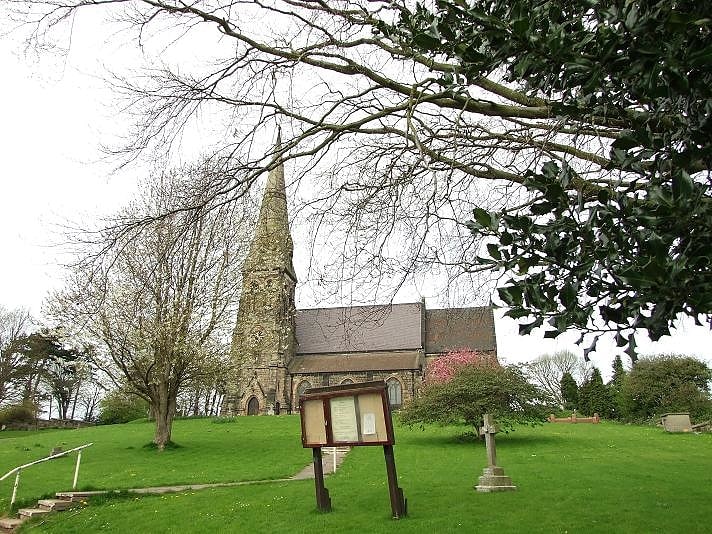
Episcopal church in Burton, England. St Mark's is the Church of England parish church for the Burton upon Trent suburb of Winshill, east of the town. It is part of the Diocese of Derby.
Built to the west of Winshill and commanding a prominent spot high above Burton upon Trent, St Mark's is a landmark that can be seen for miles along the valley of the River Trent. It is a Grade II listed building.
St Mark's church was opened in 1869. It consists of nave and aisles, chancel and south-west tower with broach-spire in the Gothic revival style. The church was designed by Edward Holmes and paid for by the brewer John Gretton of Bladon House (d. 1867). It served a district chapelry, established within Holy Trinity ecclesiastical parish in 1867 and covering the whole of Winshill. Because it was still in Derbyshire, Winshill was originally part of the Archdeaconry of Derby which transferred in 1884 from the Diocese of Lichfield to the newly created diocese of the Diocese of Southwell when that diocese was created in 1884. On 7 July 1927 the archdeaconries of Derby and Chesterfield became the Diocese of Derby.[10]
Address: Church Hill St, DE15 0HS Burton-on-Trent
St Saviour's Church
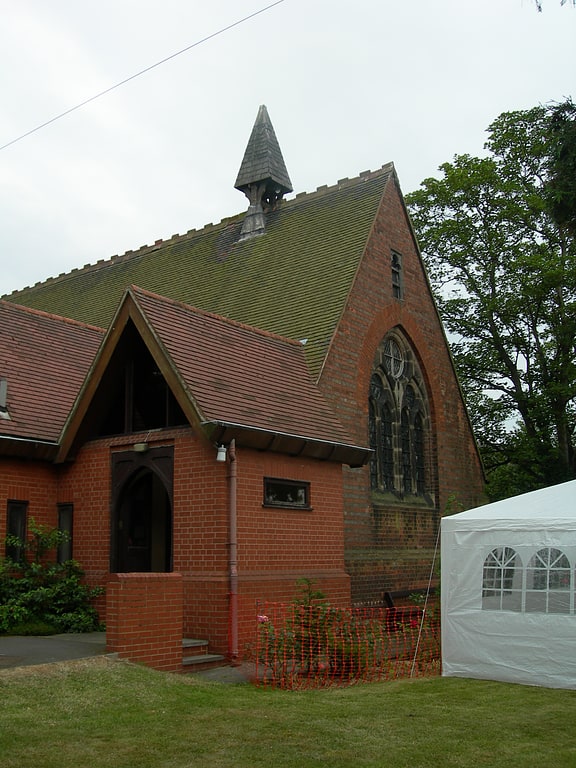
Saint Saviour's is the Church of England parish church for the village of Branston, south of Burton upon Trent. It is part of the Diocese of Lichfield.
The church was built in 1864, designed by the architect, Vincent Cook.
The church building was originally single-celled, with a bell turret at its western end. It contains an organ chamber and vestry, with a stone reredos installed in memory of the first vicar, John Bramell (1871–1897).
A porch was built in 1981 at the southern end of the church, to replace an early predecessor. At the same time, a meeting room was built on the front of the building.
In 1993, stained glass from St James' Church, Derby was placed in the east window.
The original vicarage, to the northeast of the church, is now a successful restaurant, aptly named The Old Vicarage. A new vicarage was built behind the church in 1985.[11]